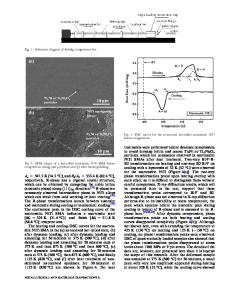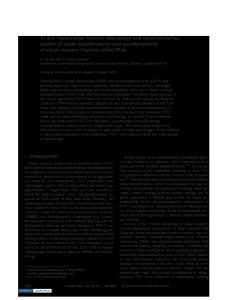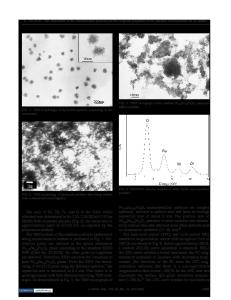In-Situ Transmission Electron Microscopy Observation on the Phase Transformation of Ti-Nb-Sn Shape Memory Alloys
- PDF / 969,809 Bytes
- 10 Pages / 593.972 x 792 pts Page_size
- 110 Downloads / 320 Views
UCTION
TITANIUM (Ti)-based alloys containing niobium (Nb) are attractive for biomedical applications, because of their high corrosion resistance, excellent biocompatibility, high strength and toughness, low elastic modulus, etc.[1–5] Among the family of the Ti-Nb alloys, Ti-Nb-Tin (Sn) ternary system has particularly gained attention due to its additional functions of shape memory and superelasticity.[6–10] Hence, there have been various metallurgical attempts to develop the mechanical and functional properties of the alloys. For example, it has been reported that the elastic modulus and shape memory properties of the alloys are sensitively influenced by ternary compositions,[3,8–10] and by heat treatment procedure and manufacturing processes.[6,11–13] These reports strongly suggest that the microstructure of the alloys plays a key role in giving rise to their mechanical and functional properties. The Ti-Nb-based alloys exhibit two stable phases of the disordered b phase with body-centered-cubic (bcc) structure at high temperature, and the a phase with hexagonal closed-pack (hcp) structure at low temperature. In the quenched alloys, metastable phases such as a¢ martensite with hexagonal structure, a¢¢ martensite with orthorhombic structure, or b phase emerge.[14–17] In addition, there are two types of x phases with hcp SATOSHI SEMBOSHI, Assistant Professor, is with Department of Materials Science, Osaka Prefecture University, Sakai, Osaka, 599-8531, Japan. Contact e-mail: [email protected] TAKAHIRO SHIRAI, formerly Graduate Student, Department of Materials Science, Osaka Prefecture University, is with Kyocera Corporation, Kyoto, 612-8501, Japan. TOYOHIKO J. KONNO and SHUJI HANADA, Professors, are with Institute for Materials Research, Tohoku University, Aoba-ku, Sendai, Miyagi, 980-8577, Japan. Manuscript submitted December 19, 2007. Article published online October 15, 2008 2820—VOLUME 39A, DECEMBER 2008
structure; one is athermal x phase, which forms during quenching from b phase at a high temperature, and the other is isothermal x phase, which precipitates during aging.[18–21] Some b-type Ti alloys exhibit reversible transformation between austenitic b phase and martensitic a¢¢ phase, which is closely associated with shape memory and superelasticity,[22–26] while it has been reported that pseudo-elastic deformation in a Ti-Mobased alloy is not due to reversible formation of a¢¢ martensite.[27] Further understanding of shape memory behavior in relation to b phase stability, or existence of athermal/isothermal x phase detailed microstructural observation of the reversible transformation between a¢¢ and b are indispensable. The purpose of this study was therefore to investigate the microstructural changes of quenched (Ti-35 wt pct Nb)-0 to 6 wt pct Sn alloys as a function of heating temperature using in-situ transmission electron microscopy (TEM) equipped with heating and cooling holders, together with X-ray diffraction (XRD) and optical microscopy (OM). The transformation temperatures were determined by d
Data Loading...











